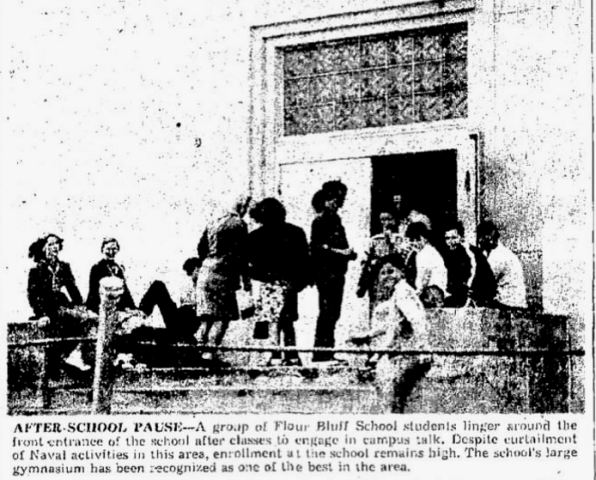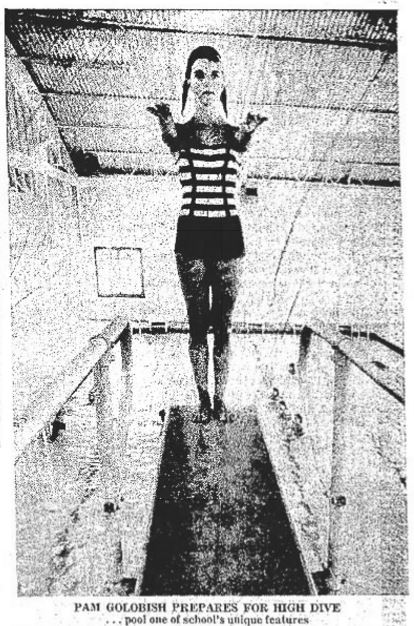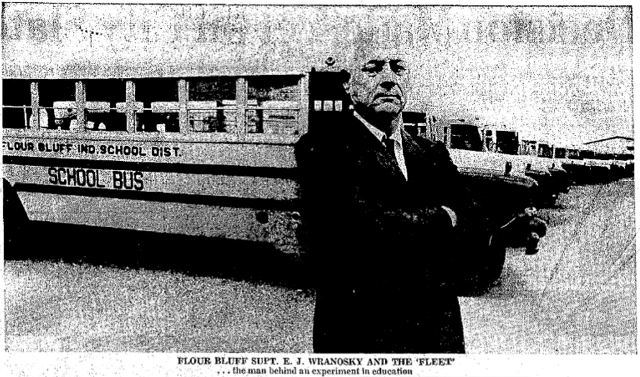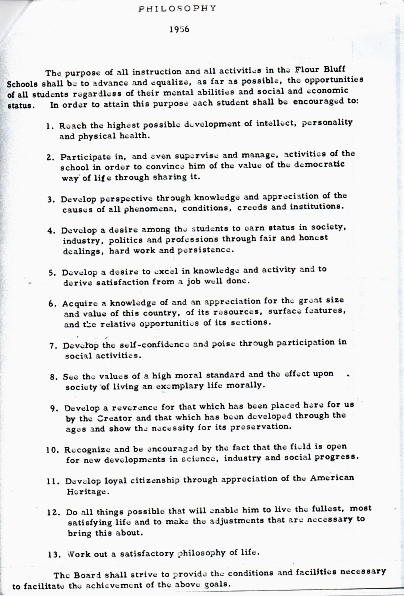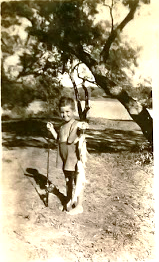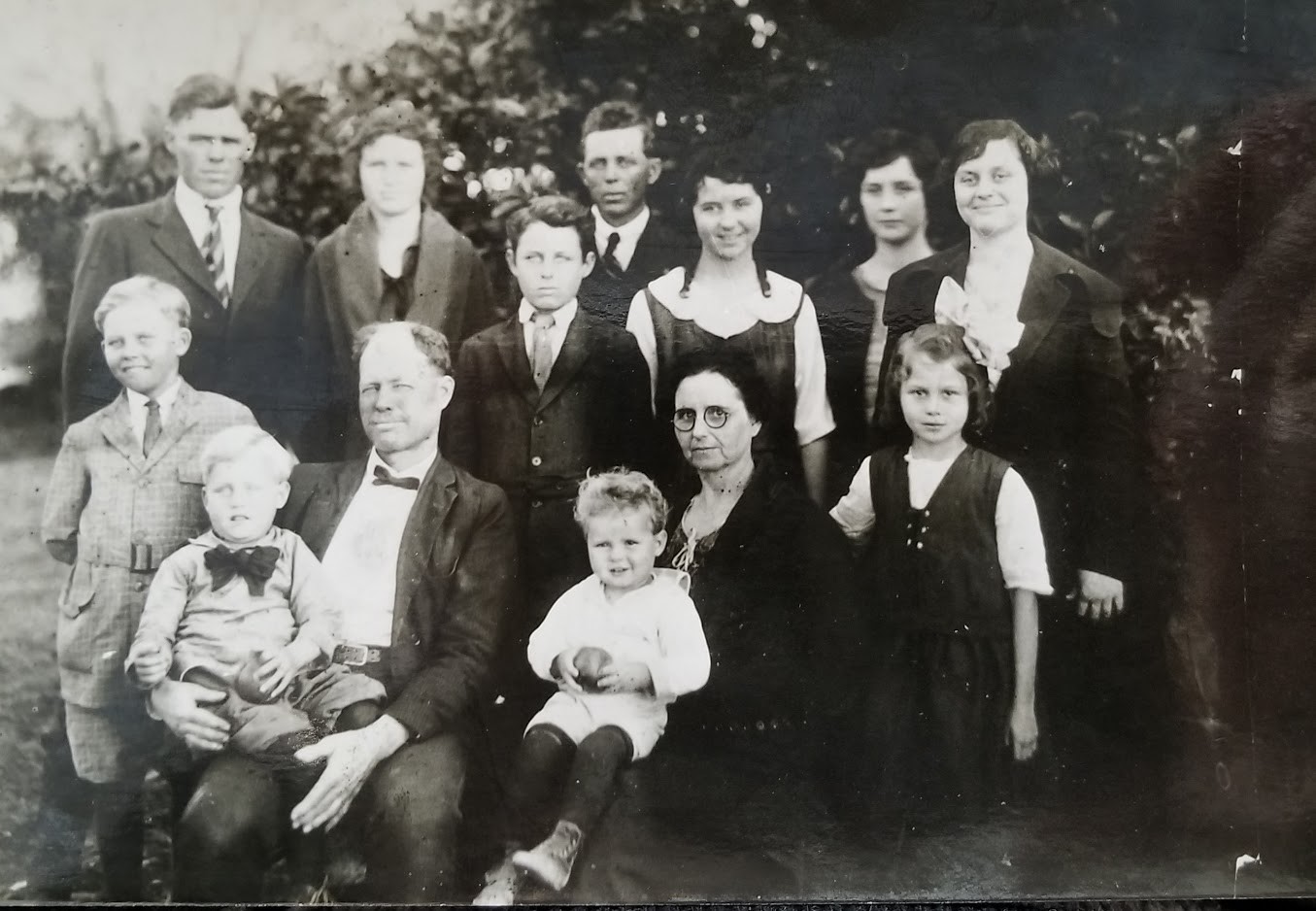[spacer height=”20px”]
The following article about Ernest J. Wranosky, Superintendent of Flour Bluff Schools, appeared in THE FLOUR BLUFF SUN on July 15, 1976, under the title of “Thirty Years in Retrospect, 1946-1976: Wranosky – Reflections on 30 Years with Flour Bluff Schools.”
Dorothy Arnold, an educator and administrator who worked side-by-side with Mr. Wranosky, wrote this first-hand account as a historical record of all that Wranosky did for Flour Bluff students in his 30 years with the district. No doubt many superintendents have come and gone in the 54 years before and 41 years after Wranosky, but none can compare to the man who put the community of Flour Bluff on the map by creating a school like no other, a school with a reputation for excellence and innovation that spread around the world, primarily via NAS Corpus Christi personnel. It should be noted that Dorothy Arnold was instrumental in helping Wranosky bring his vision to life.
As a 1976 FBHS graduate, retired FB teacher who spent her entire career at FBJH, and current school board member of FBISD, I am honored and humbled to offer this article in its entirety in THE PAPER TRAIL NEWS for all to enjoy. I know that what Ms. Arnold writes is true. Mr. Wranosky left his positive mark on me because I came up through the system he created. What he instilled in all of us is that we should leave things better than we found them. He was a living example for us all. (Note: THE SUN is no longer in print, and only a few copies exist here and there. This copy came to me via Rene Self, long-time Flour Bluff resident and civic leader.)
[spacer height=”20px”]

[spacer height=”20px”]
On July 10, 1946, Ernest J. Wranosky, Sr. held his first board meeting of Flour Bluff Common School District#22, a community on a peninsula of sand dunes, salt flats, scrub oak and sandy trails, with one paved road (Waldron Road) through the Bluff and another (Lexington Boulevard, now Padre Island Drive) to the Naval Air Station.
There were sixteen teachers, two janitors, and the superintendent, with 188.9 average daily attendance at the close of the 1945-46 term and approximately 350 students at the beginning of the 1946-47 term. The school district owned five classrooms (the old primary building), four acres of land, cafeteria, shop, home economics cottage, and four teacherages. Classes were held in the old section of the present junior high school which was built and owned by the Federal Government.
[spacer height=”20px”]

[spacer height=”20px”]
Members of the board of trustees at that time were Henry Brown, Joe B. Killian, and Arthur W. Whitener. The assessed value of the district was $1,800,000 (about $5000 per student) on a tax rate of $1.50.
The first task facing the new superintendent was to secure financing from the State of Texas for a full year (nine months) of instruction through the Rural Equalization Aid program. Wranosky began renovating buildings on the campus, moved in a building to serve as a cafeteria, and added teacherages to attract personnel to make application in the school district. At one time during this period, 22 families lived in school-owned housing.
[spacer height=”20px”]

[spacer height=”20px”]
In April, 1948, residents of the Flour Bluff community voted to become an independent school district. The district hired a tax assessor and has maintained its own tax roll since that time.
In May, 1954, Mr. Wranosky was responsible for extending the boundaries of Flour Bluff I.S.D. from 38 square miles of land surface to 56 square miles of land surface. Also included were 100 square miles of water surface. The district included parts of Mustang Island and Padre Island.
Each year funds were committed to a construction project, and as time went on, auxiliary buildings, many of which were government surplus available at low cost and renovated with local (including student) labor, were added to the campus. In addition, Wranosky was instrumental in securing funds from the Federal Government for classrooms and related instructional areas and laboratories.
[spacer height=”20px”]

Original high school that became the junior high when the new high school was built .
[spacer height=”20px”]
During his 29 years of service as superintendent, Wranosky worked with 42 board members at 541 regular/special board meetings and missed only one meeting. Those serving at the time of the election for an independent district were Henry Brown, Joe B. Killian, and J. W. Roper. Those elected to serve on the new board were S. F. Hawley, president (formerly the superintendent of Flour Bluff Common School District), Joe B. Killian, secretary, Henry Brown, J. W. Roper, H. E. Johnson, Walter E. Bechtel, and W. F. Cutler. Former board members who served with Wranosky and who are known to be living today are J. W. Roper, George F. Merzbacher, Sr., Edgar L. Barnes, H. W. Grabowske, Sr., R. C. Seeds, Sr., Jesse H. Bond, Edward R. “Bud” Graham, H. E. “Eddy” Savoy, Tom C. Witherspoon, Calvin Ramfield, M. K. Smith, Colvin E. Smith, Joe B. Killian, W. T. Talley, Sr., W.H. “Bill” Cofer, W. R. Duncan, Allen L. Hockley, Sr., D.O. Holder, H. E. “Bud” Johnson, E. L. Pharis, Virl Preston, and Doyle Rains. Over this period of time, 52,896 students were enrolled in grades K-12, 1,865 students were graduated, and 746 professional faculty members served.
At the close of his 29 years as superintendent, the size of the campus had increased from 4 acres to approximately 145 acres; from the two classroom building areas to its present size. One of the most “talked about” projects was the physical education building and swimming pool. The superintendent, with a group of students, dismantled an old hangar building at Fort Point, Point Bolivar, Galveston, and hauled the steel framework on school-owned trucks and floats procured by the district from Texas Surplus Property Agency. There were those opposing the project who considered the controversial Van Galen Ditch an adequate swimming pool. When asked, “How much seating capacity will there be in the new gym?”, Wranosky replied, “I hope none. We are building this for students to use and not sit.”
[spacer height=”20px”]
[spacer height=”20px”]
[spacer height=”20px”]
With a sharp eye for sound spending and close surveillance of tax dollars, Mr. Wranosky initiated new programs and new buildings on current financing. During the years 1972-73, 1973-74, and 1974-75, major construction projects, including 30 high school classrooms (1972-73), 48 elementary classrooms, an office complex, library and satellite cafeteria (1973-74) were completed and paid for out of current tax funds. The buildings are all fully air-conditioned, and the elementary building is fully carpeted. The cost of these buildings was about $17.00 per square foot. The architect was C. V. Tanner, and the builder was E. Eisenhauer. The high school library was designed with the assistance of top level librarians, using American Library Association standards to meet the basic requirements of 2,200 high school students, allowing for study carrels for all basic academic areas, a teacher workroom, a processing area, and an area for audio-visual listening and preparation.
[spacer height=”20px”]

[spacer height=”20px”]
Wranosky has believed tht children should be active physically, should know how to use their hands as well as their heads, and should learn much more than what is found in textbooks. To this end, the district initiated vocational programs, offered physical education in all grade levels, and operated an “open-air classroom” program. Throughout the year, groups of children were taken for camping experiences to the H. E. Butt Foundation Camp at Leakey, Texas, in the hill country, at no cost to the district. Prior o the availability of this facility, Wranosky and the Board arranged for a camp site at Hunt, Texas, at a cost of $600 per week. “With some hard-to-reach students, we get more academic subjects taught at a camp than in a classroom,” state Wranosky. “Students are required to set up a bank account and write checks for every purpose. They figure the bus mileage of the trip, how much the gas costs, how much it costs per child. They learn to cut a tree and figure its age. They study measurements, stars, and planets.”
The faculty, in curriculum development work, outlined a vocabulary to be taught at each spot along nature trails at camp. The camp is a paradise for student learning and meditation. As to extra dividends gained through camp experiences, Wranosky stated, “We’ve had children who were impossible to reach in the classroom, but somehow they came around at camp.” He should know. He has authorized and watched groups from the second grade through the twelfth. Since 1952, he has overseen the organization of activities and has, at times, accompanied the groups to and from the camp.
[spacer height=”20px”]
[spacer height=”20px”]
E. J., as he is referred to, had a passion to experiment, learn, and innovate. As a young boy in the Territory of New Mexico, he learned by doing the work of farming, ranching, dairying, and livery stable operation. It was his lot to work, work hard. And with the dignity of honest labor, he learned other simple virtues, such as family loyalty, a love and interest in one’s neighbors, the meaning of honor and respect for old teachings. Family ties were strong, and the Golden Rule was not vague philosophy, but taken literally. He completed his high school education in Woodsboro and Victoria. During these years, he worked in an automotive garage and has put this experience into practice on many occasions. He was awarded an associate degree from Victoria Junior College and Bachelor of Arts and Master of Arts degrees from Texas A&I College in Kingsville. He has completed the doctoral course work at the University of Texas and the University of Houston and has done all the research work on his dissertation. He earned a teaching certificate from Victoria Junior College and took a job in Victoria County serving as principal, teacher, coach, and custodian. He moved to Woodsboro and served in the Bonnie View I.S.D. as principal, teacher, superintendent, and coach for 11 years prior to coming to Flour Bluff.
Mr. Wranosky is convinced that educators have an obligation to assist in improving their community through service in various civic activities and organizations. He has been instrumental in organizing the Boy Scout troops and has been given the Silver Beaver Award. He is a charter member of the Flour Bluff Lions Club and has served in many capacities in this organization. He became a charter member of the Southside Kiwanis Club. He is a director of the First National Bank of Flour Bluff.
The expansion of the plant of Flour Bluff I.S.D. in both physical size and quality and quantity of offerings during Wranosky’s tenure is indeed achievement. While he has accomplished much, he has retained the personal and lasting respect of those who know him as a man of personal as well as professional stature.
This administrator initiated a student analysis program which resulted in curriculum production and revision and brought about an implementation of his philosophy. “The philosophy that has been pursued by the school over the past years is primarily my philosophy of twelve points. The additional point and the revisions are other people’s ideas,” says Wranosky. “Nothing succeeds like success itself, and nothing fails so dismally as failure.”
[spacer height=”20px”]
[spacer height=”20px”]
Through his selfless devotion to the welfare of Flour Bluff I.S.D., Mr. Wranosky developed an enviable level of respect for the administration of the school. He was never too busy to assist where help was needed. He had the courage to tackle the biggest problem – such as moving the steel framework for the physical education building – and compassion to help a custodian, neighbor, or a student who had a personal problem. Frequently, he would hear of a student who was having a particularly difficult time with his academic work. He would make arrangements to have that student report report to his office regularly for a given period of time in order to counsel the student and attempt to work with him to gain a success pattern in a given course or find a chore that he could perform. His door was always open, and he was ready to listen, provide a message of hope, and a plan of action.
A former student said, “When we had a problem, Mr. Wranosky was always willing to listen and advise us in a wise and kind manner.” They expressed genuine appreciation for his empathy, patience and understanding in his work with pupils, teachers, and parents. The current emphasis in education, which focuses attention upon the needs of the individual students, reflects the basic philosophy which has motivated E. J. Wranosky, Sr. for these many years.
During the thirty years that Ernest J. Wranosky has served Flour Bluff I. S. D. as superintendent and consultant, the system has faced numerous problems, not only in its growth from 350 students to over 3,000, from 16 professional employees to over 200, from 15 graduates to 140, but in other areas, as well. His professional, calm, and well-defined approach to each of the problems – finances, hurricanes, personnel, equipment, tax issues, buildings – is indicative of the high quality school system he has helped mold for the citizens of Flour Bluff. His leadership abilities have brought honor, stature and recognition from throughout the state, nation, and even foreign areas in which students and personnel have reflected his standards. His entire sojourn has been dedicated to the youth and citizens of this area and to improving their education. He has appreciation and regard for others and the talent to communicate.
Questioned on his sojourn in Flour Bluff Schools, Wranosky said, “Directing the academic progress of Flour Bluff Schools as the community evolved into a fair degree of affluence has been a real challenge which brought many satisfying rewards as well as some disappointments. I recognize that I have passed up an opportunity to build the school plant monument that I might have. One person who is in a position of judgement told me, ‘You could have a gold-plated school plant here if you had levied the tax that you should have.’
“A great many people have worked extremely hard to bring about the scholastic excellence which I desired above all else. To them, especially Board and faculty, I am forever grateful. My sojourn began with a tax value of slightly more than $5000 per pupil and some deficit. It ends with prospects for 1976 of near $50,000 per pupil and no debt. The tax rate has not changed in 30 years. It is a happy situation.”
**********

DOROTHY THERESA ARNOLD, age 93, passed away on Friday, September 27, 2013 in Victoria, Texas. Dorothy was born on September 1, 1920 in Cuero, Texas, to William Henry “WH” Arnold and Bertha Toerck Arnold. She attended Mission Valley School and graduated from Patti Welder High School in 1936. She attended Victoria College and Mary Hardin Baylor College in Belton. She received her Bachelor of Science and Master of Education Degree from The University of Texas. Her teaching career began in 1940 at Liberty School (Victoria County) and continued for 38 years in Weesatche (Goliad County), Bonnie View (Refugio County), of which 30 years were at Flour Bluff (Nueces County) as a classroom teacher and business manager. During this time, she participated in many professional and civic organizations on local, district, state, and national levels and continued her education to obtain bachelor and master degrees as well as doing her post graduate work at The University of Texas, University of Corpus Christi, University of Houston and Texas A&I University. She received numerous awards, honors, certificates, and recognitions related to educational pursuits. After her retirement in 1978, she enjoyed rewarding years living in the Mission Valley Community doing volunteer work, church work, and continuing participation in professional and civic pursuits which included the Pilot Club of Cuero and Heirloom Stitchers Guild. Dorothy gave of her time and talent in many ways to better her community. A very important part of Dorothy’s life was her strong devotion to her church. She enjoyed her hobbies of crafts, sewing, quilting, crocheting, as well as playing cards and domino games. She is survived by loving cousins and friends. (Source: Rosewood Funeral Chapel website)
